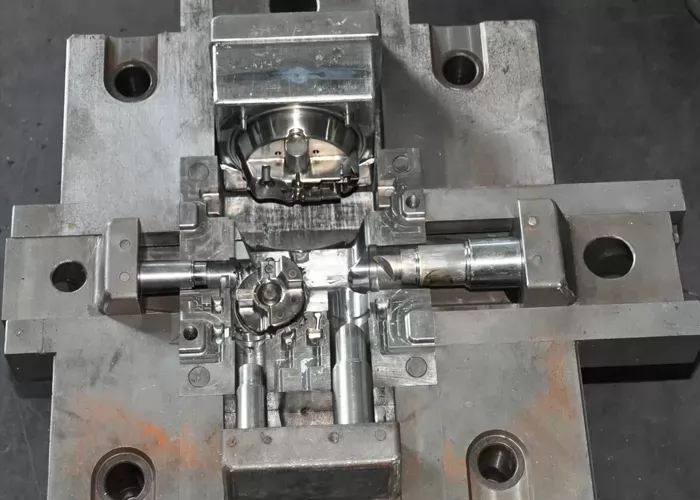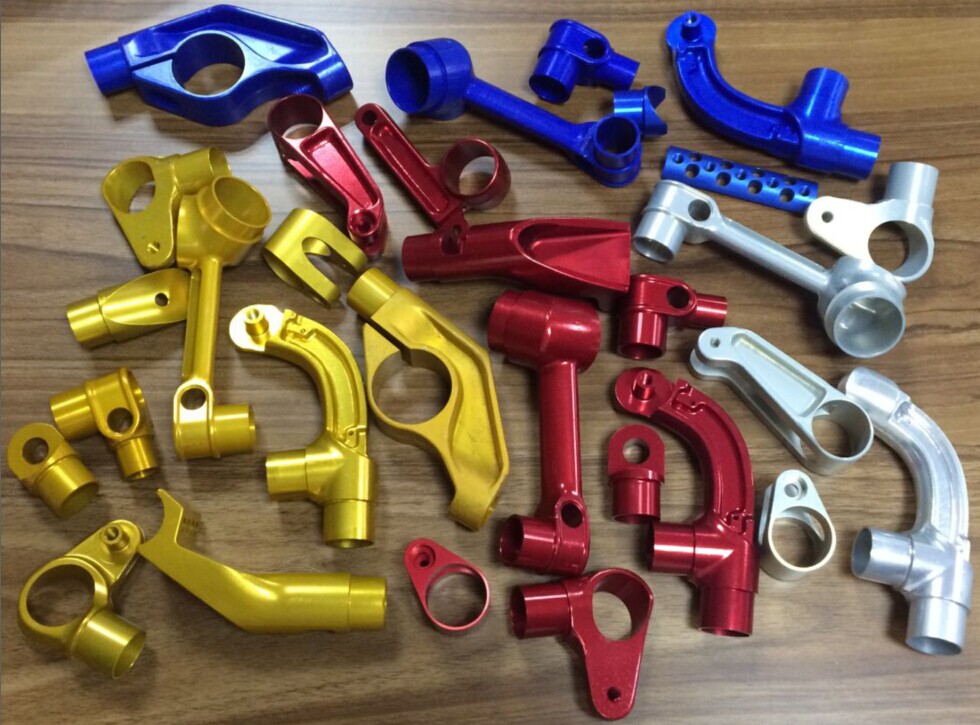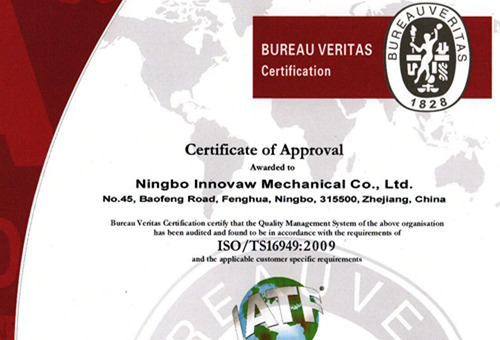These three factors are the key to mold deformation (1)
At present, in the mold manufacturing, new processes such as EDM, profile grinding and wire cutting have been applied, which has solved the problem of processing and heat treatment deformation of complex molds. However, these new processes have not been universally applied due to various conditions. Therefore, how to reduce the heat treatment deformation of the mold is still a very important issue.
Generally, the mold requires high precision. After heat treatment, it is inconvenient or even impossible to process and calibrate. Therefore, even after the heat treatment, even if the structural properties have reached the requirements, if the deformation is too poor, it will be scrapped because it cannot be saved. Not only affects production, but also causes economic losses.
The general rule of heat treatment deformation is not discussed here. The following is a brief analysis of some factors affecting mold deformation.

Effect of mold material on heat treatment deformation
The effect of the material on the heat treatment deformation, including the chemical composition of the steel and the original structure.
From the material itself, the heat treatment deformation is mainly affected by the influence of the composition on the hardenability, the Ms point, and the like.
When the carbon tool steel is subjected to water-oil two-liquid quenching at normal quenching temperature, it generates a large thermal stress above the Ms point; when it is cooled below the Ms point, the austenite transforms to martensite and generates tissue stress, but Since the carbon tool steel has poor hardenability, the value of the tissue stress is not large. In addition, the Ms point is not high. When the martensite structure changes, the plasticity of the steel is already poor, and plastic deformation is not easy. Therefore, the deformation characteristics caused by the thermal stress are retained, and the mold cavity tends to shrink. However, if the quenching temperature is increased (>850 °C), it may also be caused by the tissue stress, which causes the cavity to swell.
When the mold is made of low-alloy tool steel such as 9Mn2V, 9SiCr, CrWMn, GCr15 steel, the quenching deformation law is similar to that of carbon tool steel, but the deformation is smaller than that of carbon tool steel.
For some high-alloy steels, such as Cr12MoV steel, due to its high carbon and alloying elements, the Ms point is lower, so there is more retained austenite after quenching, which has a volume expansion due to martensite. Offset effect, therefore, the deformation after quenching is quite small, generally when air quenching, air cooling, nitrate bath quenching, the mold cavity tends to slightly expand; if the quenching temperature is too high, the amount of retained austenite increases, type The cavity may also shrink.
If a mold is made of carbon structural steel (such as 45 steel) or some alloy structural steel (such as 40Cr), the Ms point is higher, and when the surface begins martensite transformation, the core temperature is still high, and the yield strength is high. Lower, with a certain degree of plasticity, the instantaneous tensile tissue stress of the surface to the core is easy to exceed the yield strength of the core and the cavity tends to swell.
The original structure of the steel also has a certain influence on the quenching deformation. The term "original structure of steel" as used herein includes the grade of inclusions in steel, the level of banded structure, the degree of segregation of components, the directionality of free carbide distribution, and the like, as well as the different tissues obtained by different preheat treatments ( Such as pearlite, tempered sorbite, tempered troostite, etc.). For die steel, the main considerations are carbide segregation, carbide shape and distribution.
The influence of carbide segregation on quenching deformation in high carbon high alloy steel (such as Cr12 steel) is particularly obvious. Due to the segregation of carbides, the composition of the steel after heating to the austenite state is not uniform, so the Ms points in different regions will be high or low. Under the same cooling conditions, the transformation of austenite to martensite is preceded, and the transformed martensite is larger or smaller than the carbon content, and even some low carbon and low alloy regions may be Martensite is not obtained at all (and bainite, quaternary body, etc.), all of which cause uneven deformation after quenching of the part.
Different carbide distribution patterns (granular or fibrous distribution) have different effects on the expansion and contraction of the matrix, and thus also affect the deformation after heat treatment. Generally, the cavity is swollen along the direction of the carbide fiber, and is more obvious. And perpendicular to the fiber direction is reduced, but not significant, some factories have specified this, the cavity should be placed perpendicular to the direction of the carbide fiber to reduce the deformation of the cavity, when the carbide is granular When evenly distributed, the cavity exhibits uniform expansion and contraction.
In addition, the state of the structure before the final heat treatment also has a certain influence on the deformation. For example, the original structure is spherical pearlite, and the deformation tendency of the sheet pearlite after quenching is smaller. Therefore, the mold with strict deformation requirements is often subjected to quenching and tempering after roughing, and then finishing and final heat treatment.
Effect of mold geometry on deformation
The effect of the mold geometry on the heat treatment deformation actually still works through thermal stress and tissue stress. Since the shape of the mold is various, it is still difficult to summarize the exact deformation law.
For symmetrical molds, the deformation tendency of the cavity can be considered according to the cavity size, outer dimensions and height. When the wall of the mold is thin and the height is small, it is easier to harden. At this time, the tissue stress may play a leading role, and therefore, the cavity tends to expand. On the other hand, if the wall thickness and height are large, it is not easy to be hardened. At this time, thermal stress may play a leading role, and therefore, the cavity tends to shrink. What is said here is the general trend. In the production practice, it is necessary to consider the specific shape of the part, the steel type used and the heat treatment process, etc., and continuously summarize the experience through practice. Due to the actual production, the outer dimensions of the mold are often not the main working size, and can be corrected by grinding after deformation, so the above analysis is mainly the deformation trend of the cavity.
For the deformation of the asymmetric mold, it is also the result of the combined action of thermal stress and tissue stress. For example, for a thin-walled thin-walled mold, since the mold wall is thin, the internal and external temperature difference during quenching is small, and thus the thermal stress is small; but it is easy to be hardened and the tissue stress is large, so the deformation tends to expand the cavity.
In order to reduce the deformation of the mold, the heat treatment department should work together with the mold design department to improve the mold design, such as avoiding the mold structure with a large difference in section size, the shape of the mold to achieve symmetry, and the complex structure of the mold.
When the shape of the mold cannot be changed, in order to reduce the deformation, some other measures can be taken. The overall consideration of these measures is to improve the cooling conditions so that the parts are evenly cooled; in addition, various coercive measures can be assisted to limit the quenching deformation of the parts. For example, adding a process hole is a measure to uniformly cool each part, that is, to open holes in some parts of the mold so that the various parts of the mold are uniformly cooled to reduce deformation. It can also be wrapped with asbestos on the periphery of the mold which is easily swelled after quenching to increase the difference in cooling between the inner hole and the outer layer, so that the cavity shrinks. Retaining or reinforced on the mold is another mandatory measure to reduce the deformation. It is especially suitable for the concave mold with cavity expansion and the mold which is easy to expand or shrink.
Copyright statement: The content of the article is extracted from the network. If there is any infringement, please contact us to delete it!






.png)


.png) +86-574-83036520
+86-574-83036520 +86-574-83008051
+86-574-83008051 sales@innovaw.com
sales@innovaw.com

.png)

.png)
.png)
.png)

.png)
.png)
.png)









.png)
